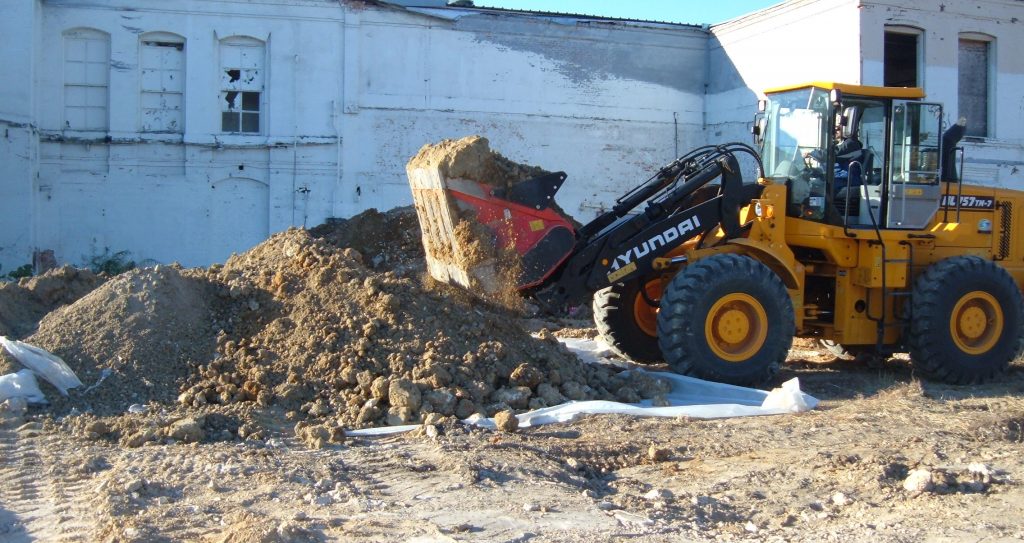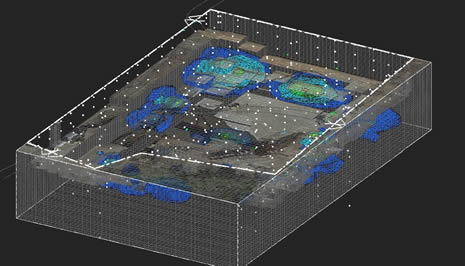
Years ago, dig-and-haul was the common remediation solution for soils contaminated with hazardous organics or heavy metals. Our team will work with you to rapidly develop and implement an effective in situ soil remediation solution. The EPA has its own view on remediation technologies for cleaning up contaminated sites that can be reviewed at EPA.gov
Soil remediation generally attempts to address one of three potential exposure pathways:
- Direct exposure to contaminated soils
- Inhalation exposure to contaminated vapors
- Ingestion exposure to contaminated groundwater
Direct exposure to contaminated soils
Direct exposure to contaminated soils can occurs either through dermal contact or ingestion of contaminated soil particles. There are numerous soil remediation technologies available to mitigate this exposure pathway, such as:
- Removal or isolation (excavation, in situ stabilization, engineered barriers, or a clean cover)
- Biological based remediation (bioventing)
- Physical remediation (soil vapor extraction)
- Chemical remediation (chemical oxidation such as ozone, chemical reduction, etc.)
Depending upon the physical makeup of the existing soils, type and depth of contaminant, planned site usage, and other site factors, one (or several) of the above soil remediation options may be effective, Metals contamination will generally require either removal, isolation, or redox modifications. Generally, biological, physical, and chemical remedial techniques are ineffective. Alternatively, chlorinated or petroleum chemicals (e.g., benzene) can often be cost effectively remediated either by biological, physical, or chemical methods.
Inhalation exposure to contaminated vapors
Vapor exposure is primarily associated with workers completing subsurface work or vapor intrusion into occupied buildings. Contaminated soil vapors can originate from either:
- Unsaturated soil impacts, or
- Saturated soil impacts diffusing through groundwater to the unsaturated soils.
Generally the vapor exposure pathway is addressed either through use of an engineering control to reduce or isolate the contaminant (fans to clear the breathing space or sub slab depressurization systems for buildings) or a soil remediation technologies such as:
- Biological based remediation (bioventing)
- Physical remediation (soil vapor extraction)
- Chemical remediation (chemical oxidation such as ozone)
Ingestion exposure to contaminated groundwater
 Drinking water contamination often originates as soil contamination in either the unsaturated or saturated soil intervals. In some instances groundwater contamination can be the result of non-aqueous phase liquids (NAPLs) that are held in the soil pore spaces or as free flowing pools.
Drinking water contamination often originates as soil contamination in either the unsaturated or saturated soil intervals. In some instances groundwater contamination can be the result of non-aqueous phase liquids (NAPLs) that are held in the soil pore spaces or as free flowing pools.
For the unsaturated interval, the infiltration of rainwater can dissolve contaminants, resulting in impacts to groundwater above regulatory drinking standards. Additionally, the more volatile contaminants can diffuse into soil gas, which can also migrate and adversely impact groundwater. Many of the remedial options associated with the Direct exposure to contaminated soils above, can also be used to remedy infiltration and soil vapor based impacts to groundwater.
For the saturated interval, often compounds with lower aqueous solubilities have a significant amount of their mass adsorbed to the soil particles. Therefore, it is frequent necessary to remediate the saturated soils to achieve groundwater drinking standards. Often, remedial designs only take into account groundwater concentrations, without fully understanding the complications associated with contaminants adsorbed onto soils. In most instances, the initial remedial effort is temporarily successful in reducing groundwater concentrations, but the contaminant mass that is adhered to the soils will slowly reequilibrate with groundwater. The reequilibration can result in groundwater concentrations returning to their pre-remedy levels. Generally this is called “rebound”.
As always, there are exceptions to this rule. Compounds such as vinyl chloride and 1,4-dioxane are not readily adsorbed to soils, and are therefore mostly found dissolved in groundwater.
There are a large number of soil remediation technologies available to mitigate this exposure pathway, such as:
- Removal or isolation (excavation or in situ stabilization)
- Biological based remediation (aerobic or anaerobic biodegradation)
- Physical remediation (air sparging coupled with soil vapor extraction)
- Chemical remediation (chemical oxidation such as alkaline activated persulfate, chemical reduction, etc.)
- Thermally enhanced soil remediation technologies
One of the most referenced guidance documents is USEPA’s 1996 Soil Screening Guidance which can be downloaded from here.
